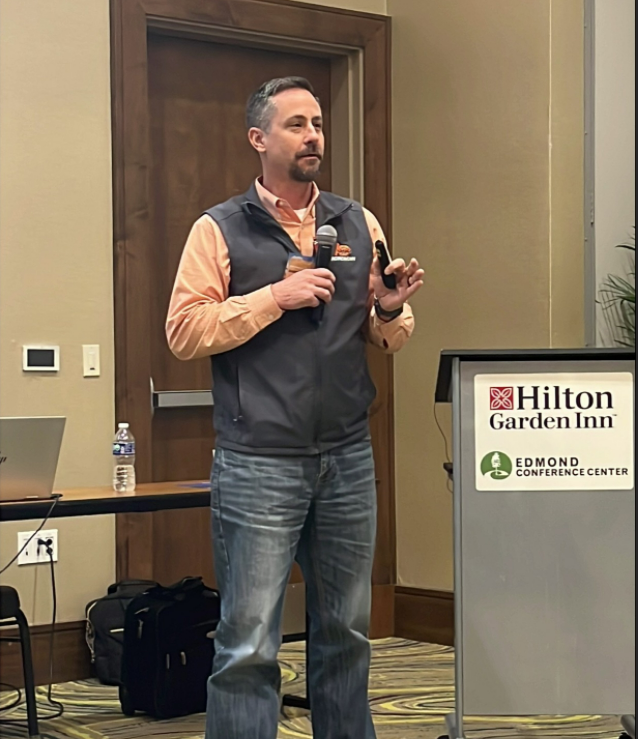
At the OGI Wheat Meeting, Farm Director, KC Sheperd had the opportunity to visit with Oklahoma State University Extension Specialist for Precision Nutrient Management, Brian Arnall. Sheperd and Arnall talk about researching the impact of nitrogen application on pre-planting.
“That data is over the last seven to ten years, and we are combining all my research to look at the value of pre-plant nitrogen versus everything in season,” Arnall said. “That means everything in February, March or April applied nitrogen-wise.”
In the study, which consisted of over 100 trials, Arnall said it was discovered that pre-planting nitrogen was better yielding than planting in season only a handful of times.
“The all-in season was better about 30 percent of the time, meaning that by waiting until February, March or April to apply the nitrogen, I was increasing yield 33 percent of the time over the pre-plant,” Arnall said.
Another big win, Arnall said is that 60 to 70 percent of the time, the in-season was better protein-wise, with increases of over ten percent.
“Never once did pre-plant nitrogen have better protein,” Arnall said. “It is just because we are running out of nitrogen when we plant that early.”
Arnall also talked about what he learned in his research regarding applying nitrogen during drought.
“What I saw on farm and field is that the pre-plant during that drought typically died faster than the other fields died,” Arnall said.
By delaying nitrogen and keeping those plants smaller, Arnall said crops tend to do better in drought conditions.
“You don’t want big wheat going into a drought,” Arnall said. “We run too much moisture out, it is too much stress. So, this nitrogen management, by delaying nitrogen, is keeping the plant smaller, managing our tillers properly, and more than likely, we think it is going to send out a better root, too, because it is trying to scavenge more water and nitrogen and it tends to be better in these drought conditions.”
Another topic of interest, Arnall said, is understanding if different varieties of wheat perform better with different application rates of nitrogen.
“This last year we saw that there were some that managed better without nitrogen,” Arnall said. “They still lost yield, right, but it is the difference between low and high that was impressive, that they just held on better. Green Hammer came out of a low nitrogen trial in Tipton, and one of the first things about Green Hammer besides it’s resistance that Brett (Carver) liked was that under almost no nitrogen it was outyielding everything else.”
Arnall also talked about the Red Dirt Agronomy Podcast, which features Arnall, Josh Lofton, Jason Warren and Dave Deken talking about crop research and ideas that may help ag producers get the most out of their land, and what it is like to live in rural America.
“We try to bring in guests and we ask them the things we want to know as scientists and agronomists and researchers,” Arnall said.
To visit the Red Dirt Agronomy Podcast website, click here.


















